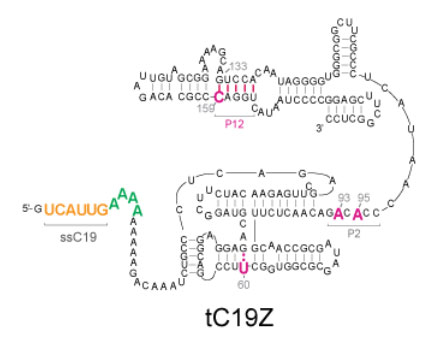
Research
RNA world
RNA self-replication

As the ancestral replicase appears to be lost in time, work in our lab is aimed at building modern-day analogues of the ancestral replicase to reconstruct this key aspect of the RNA world and learn more about the functional properties of life’s first genetic system.
Starting from the archetypal R18 RNA polymerase ribozyme discovered by Bartel and colleagues, we are using molecular evolution and RNA engineering to generate novel RNA polymerase ribozymes. We have begun to expand the synthetic range of RNA polymerase ribozymes to RNA oligomers up to 96 nucleotides (nts) long [1], corresponding to approximately half the length of the ribozyme itself.
We are also aiming to overcome the stringent template sequence dependence of the polymerase ribozyme enabling the synthesis of other functional RNAs (such as e.g. a hammerhead endonuclease ribozyme [1]) and ultimately the polymerase ribozyme itself (Science, 332, 209). Finally we are interested in the role that structured media, such as the eutectic phase of water ice [2] could have played in this process.
- Ribozyme-catalyzed transcription of an active ribozyme.
Wochner A, Attwater J, Coulson A, Holliger P.
Science. 2011; 332 :209-12. - Ice as a protocellular medium for RNA replication.
Attwater J, Wochner A, Pinheiro VB, Coulson A, Holliger P.
Nat Commun. 2010; 1: 76. doi: 10.1038/ncomms1076